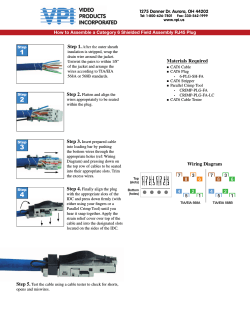
Way to strengthen implementation of EIA in Asia
35th Annual Conference of the International Association for Impact Assessment (IAIA15): Way to strengthen implementation of EIA in Asia - Based on six country study in Asia- Ikuko Matsumoto, Daisuke Sano, Yasuo Takahashi, Masami Tsuji and Akiko Urago (IGES) April, 2015 Florence, Italy Outline 1. 2. 3. 4. Background Objectives of the research Research framework Common challenges (system/implementation) • Upstream EIA/SEA • EIA quality • Information disclosure/public participation • Environmental management plan/monitoring 5. Opportunities • For mutual learning among Asian countries • For learning from international communities • For the future activities from this study 1. Background • Most of the East and Southeast Asian countries are about finalizing establishment of basic EIA system, but need to strengthen its implementation and further establishment of EIA policies. • Existing activities on strengthening EIA system and its implementation by ADB, WB, IFC, USAID/EPA, Australian government, JICA and others in Asia • Increasing Japanese private sector investment in Asia 2. Objectives of the research • Identifying common challenges and opportunities to strengthen EIA system and its implementation in Asia (Cambodia, Indonesia, Korea, Myanmar, Thailand, Vietnam) in a deferent development stage • Providing guidance for Japanese private sector to understand basic EIA system in Asia and its implementation challenges 3. Research framework • Scope: EIA system (policy and capacity), its implementation, and challenges and opportunities in six Asian countries • Methods: literature review; interview to key stakeholders in six countries including government officials from different ministries, EIA consultants, lawyers, academics, development agencies and NGOs; reviewing case studies in six countries 4. Common Challenges (1): Upstream EIA/SEA System Lack of SEA legislation and guidance 4 Lack of systematic training on SEA 6 Implementation Common Challenges # of Country Permission of projects before EIA approval 2 Weak SEA implementation capacity 4 Weak collaboration with other ministries regarding SEA 5 4. Common Challenges (2): EIA Quality Implementation System Common Challenges Lack of sector guidelines and technical guidance for assessment Lack of registration system for EIA consultants Absence of a mechanism to ensure objective EIA review, such as EIA review by Independent EIA review committee (IRC) Limited quality of baseline data Limited technical skill for EIA review by gov’t staff Insufficient technical/financial capacity of EIA consultants to conduct sound investigation Absence or insufficient higher education basis to foster EIA experts # of Country 4 2 2 4 2 4 5 Implementation System 4. Common Challenges (3): Info disclosure/ public participation Common Challenges # of Country Unclear procedures or requirements for information disclosure and public participation Limited public access to EIA reports during review stage Insufficient or ineffective public participation Limited access of EIA information such as insufficient web-based communication system Limited awareness on information disclosure and public participation related to EIA by project proponents Limited capacity of NGOs and local communities to effectively respond to EIAs 4 4 5 3 5 5 Implementation System 4.Common Challenges (4): Environmental management plan/monitoring Common Challenges # of Country Limited financial basis for responding to unexpected situations, such as by environmental bond 5 Lack of systematic review of monitoring reports by independent body 5 Limited implementation of mitigation measures and monitoring by project proponents 6 Insufficient quality of monitoring reports prepared by project proponents 5 Weak monitoring capacity of government 6 5. Opportunities (1) Opportunities for mutual learning among Asian countries based on existing good practices •Examples: •Development of SEA legislation and guidance, •Establishment of sector guidelines and technical guidance for assessment •Improvement of technical skill of government staff for EIA review, and capacity of consultants for EIA preparation •Development of guidelines for information disclosure and public participation •Establishment of web-based communication system •Mutual learning to improve implementation of public participation, and strengthen monitoring capacity of government agencies 5. Opportunities (2) Opportunities for learning from international communities based on global good practice •Examples: •Systematic training to strengthen implementation capacity of SEA including strengthening collaboration with other ministries regarding SEA •Development of materials on capacity building for EIA consultants, and university curricula to study EIA •Development of guidelines for information disclosure and public participation, and establishment of web-based communication system •Support to mutual learning for improving implementation of public participation, and to strengthen monitoring capacity of government agencies •Advice for improvement of implementation of mitigation measures and monitoring by project proponents 5. Opportunities (3) Opportunities for the future activities from this study • Examples: • Facilitation of mutual learning in Asia • Information sharing including private sectors • Promotion of knowledge and experience sharing Thank you ! Ikuko Matsumoto i-matsumoto@iges.or.jp 13
© Copyright 2025













